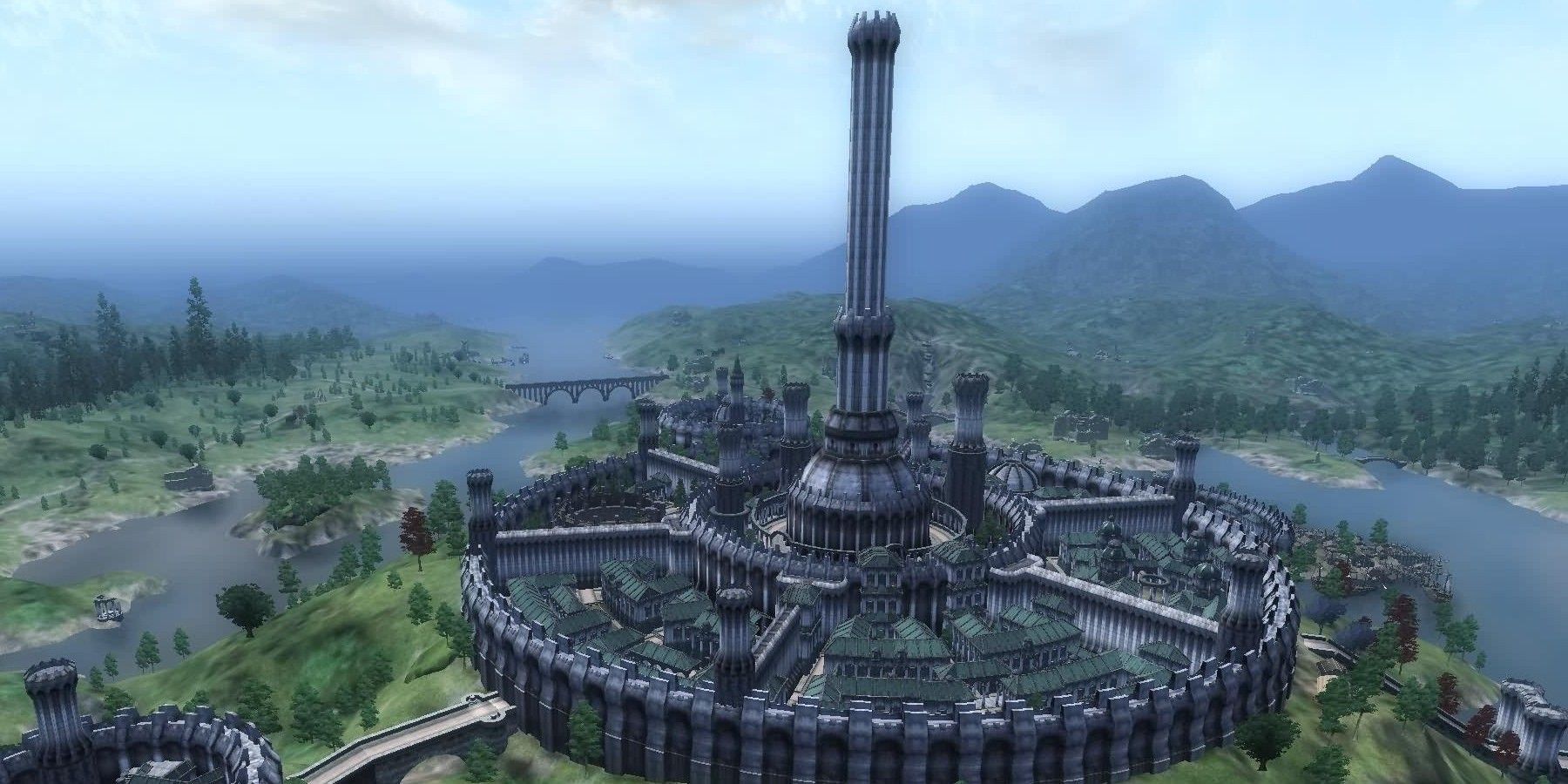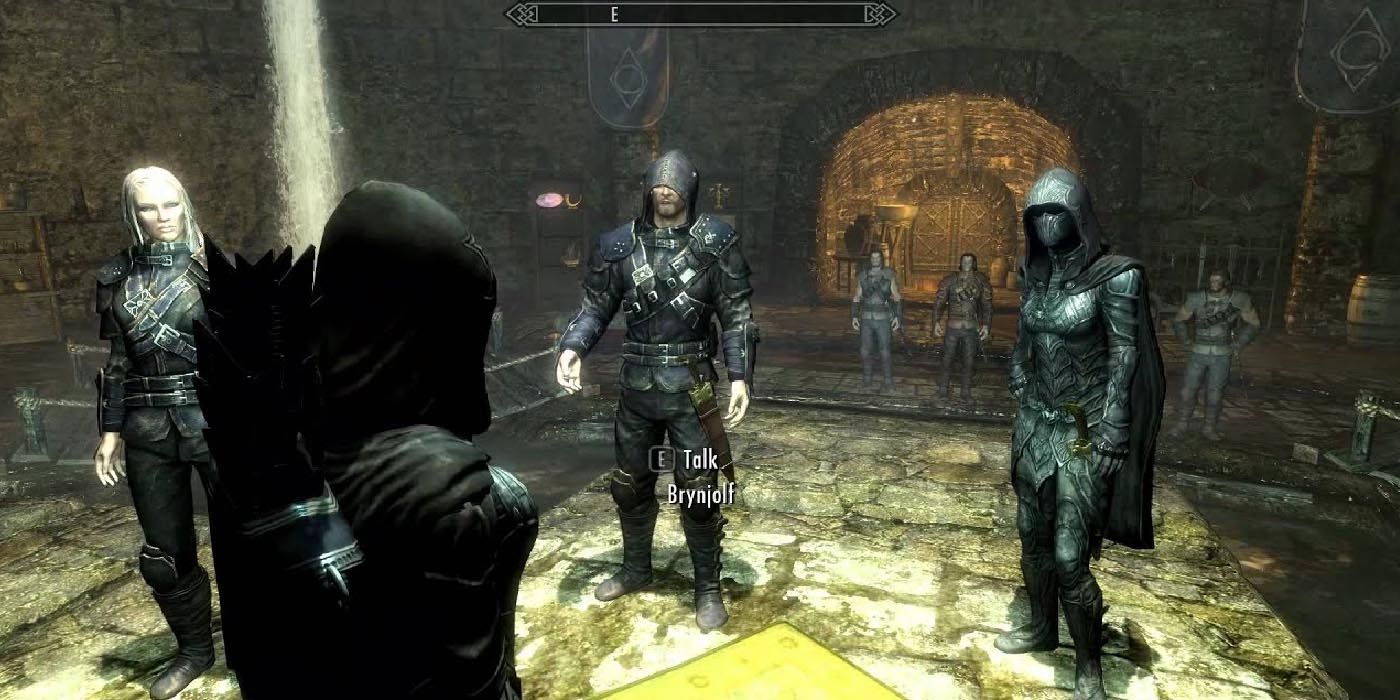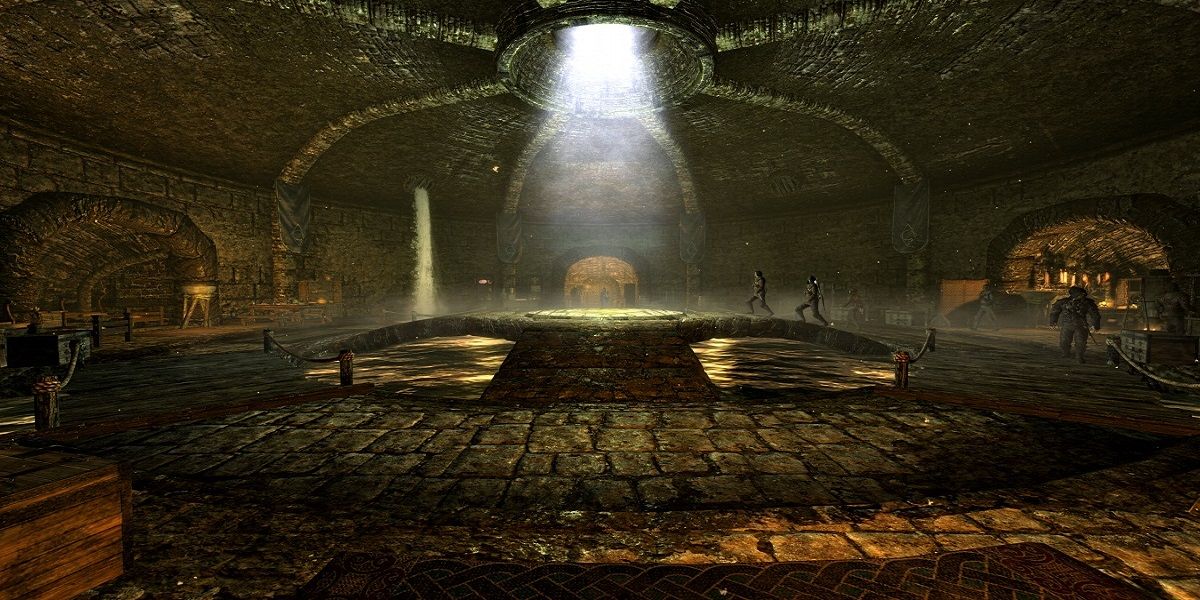Since the day of its release in November 2011, Skyrim has been compared with its predecessors on practically every level; its gameplay, story, and characters have all been scrutinized by long-time fans of the series. The game's factions were also put under the same critical lens, with fans comparing Skyrim's iterations of popular guilds to earlier appearances in the series.
One such faction is the Thieves Guild, a group that gives the player the ability to learn new stealth abilities and work their way up the ranks to become a master thief. The Thieves Guild has appeared in every Elder Scrolls title since Daggerfall, and while the general quest formula and character archetypes tend to stay quite similar, there are some key differences in how the factions behave between each game.
Finding the Thieves Guild In Oblivion and Skyrim
One of the starkest differences between the Thieves Guild in Oblivion and Skyrim is how the faction is found. In Oblivion, there are three separate ways to find the Guild, the first of which sees the player receive a bounty from a guard and head to prison. Once out, the player will be approached by a representative of the Thieves Guild, who invites them to a nearby meeting.
The second way to find the Thieves Guild in Oblivion is by spotting a wanted poster for a thief named "The Gray Fox" in the Imperial City and asking the citizens of the city about the man. After some hints about the beggars of the city being closely affiliated with the Guild, the player can ask local beggars about the Thieves Guild, who will eventually reveal that a meeting is taking place soon.
The final method of finding the Guild is by heading to Bravil and talking to the Argonian named "City-Swimmer," who will immediately tell the player that a meeting is about to be underway. Once at the meeting, the player will have to prove their worth to the Guild by stealing a diary. However, they will need to compete with two other initiates. There is actually a possibility of losing this quest, but a second chance can be given to the player, and they will be tasked with stealing a cutlass from the "Fighting Chance" shop.
Skyrim's Thieves Guild, on the other hand, is a bit more direct with its initial questline. Upon approaching Riften, a guard will tell the player that the city is home to the infamous Thieves Guild and that they are rumored to reside in the underground Ratways. While players can go and discover the Guild's hideout for themselves, they will likely be approached by Brynjolf first, who tasks the player with stealing a ring and planting it on an Argonian in the Riften marketplace.
Unlike Oblivion's initiation quest, the player cannot really fail the first Thieves Guild quest in Skyrim, as being spotted ends the quest, but still lets the player into the Guild. Skyrim's first Thieves Guild quest is often criticized by fans of Oblivion for being a little too generic and forgiving, as when compared to the previous entry, the quest is just given to the player immediately, as opposed to having to discover the Guild for themself.
The General Quest Structure Between Games
Overall, Oblivion has twelve main quests, including the initiation ones. Generally, each of these quests puts a strong emphasis on stealth, and cannot be completed with brute force or combat. Even when the Guild comes into conflict with other factions, the player is always tasked with handling the conflict in a subtle and covert way, such as the mission where a captain of the guard is threatening the Guild, so the player has to steal recommendation letters, forge the signature, and deliver them so that the captain is transferred to another city.
Thematically, the missions often revolve around stealing from the rich and unworthy, and giving to the poor, in a classic Robin Hood-like narrative. The gameplay reflects this, with stealth being the primary focus, and some detective work needed for complex quests in which the goal is not immediately obvious.
The Thieves Guild quests in Oblivion have a natural progression to them, with each new mission furthering the player's rank in the Guild, and tasking them with increasingly complex heists. The player will go from stealing a sword to sneaking through a palace's hidden entrances and eventually even stealing an Elder Scroll.
Skyrim has eleven mainline quests, which begin with collecting some debts, and tend to boil down to planting an item or stealing an item in a location. One of the main criticisms of Skyrim's Thieves Guild quests is that they don't often put the player in the shoes of a sneaky thief, as most missions can be completed with combat. There's no real downside to this either, the player won't fail the mission, or even be discredited by the Guild in a conversation, as long as the quest item is stolen or placed, the mission is successful.
A Few More Noteworthy Differences
One aspect of Skyrim's Thieves Guild that is often praised by fans is its hideout. In Oblivion, the Guild doesn't really have a central base but instead spreads meetings across the map in hidden locations. In Skyrim, the Guild's Riften underground hideout is iconic, with a range of explorable rooms and alcoves that add character to the faction.
The Guild's hideout can also be upgraded over time, with unique and memorable characters joining the Guild upon completion of some side quests. New cosmetics are also added, as well as new Fences that can be sold stolen goods.
One key difference between Oblivion and Skyrim's Thieves Guild is that in Skyrim, the faction's missions are given to the player right away, with no restrictions on when the next mission can be played. On the other hand, Oblivion forces the player to use their thieving skills outside of the Guild's missions, only giving players access to the next quest when enough stolen goods have been sold to the various Fences around Cyrodiil.
The Elder Scrolls 5: Skyrim is currently available on PC, PS4, PS5, Xbox One, Xbox Series X/S, and Switch.




